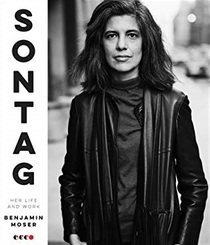Detail after detail, this book follows the life and career of Susan Sontag, a brilliant and famous activist and essayist. From an academic into an internationally recognized individual, this unusual woman pursued a life that appealed to people around the world. Her traumatic upbringing with an alcoholic mother with whom she never really connected led her to search libraries to fill her curious mind during her youth, becoming a habit of a lifetime. Exploring relationships with her mother, sister, one time husband, son, male and female lovers the author describes how he believed that Sontag chose her life path. In some ways she changed over time; in others not at all. While she searched for the truth she often lied. She is shown to be weak and strong uncovering her humanity. She slept with both men and women but preferred women yet could not admit she was a lesbian. Perhaps she was a victim of her times when one did not admit such things. To her coming out was a process. Often unhappy, she would lash out or be exceedingly generous to friends.
A complicated woman, Sontag's positive and negative attributes link to the thoughts that swirled in her head. With a photographic memory, she devoured issues she pursued in great depth. Many were important and relevant today. She was drawn to Vietnam and Sarajevo where she worked to understand the people in contrast to the conflicts. Sontag has been called a New Left public intellectual, but she was is more complex than that, looking for meaning, metaphor, and representation than in ideology. Her mind needed development and filling such that she failed to care for her body, suffering from three bouts of cancer, the last of which ended her life.
This is not an easy read but it is fascinating. Uncovering the life of Susan Sontag was indeed a difficult task, no less a task than it is for one to read about it. If I have one complaint is that the author returns many times to issues while discussing others, losing me in the points he intends to make but upon reflection I usually found it.
A complicated woman, Sontag's positive and negative attributes link to the thoughts that swirled in her head. With a photographic memory, she devoured issues she pursued in great depth. Many were important and relevant today. She was drawn to Vietnam and Sarajevo where she worked to understand the people in contrast to the conflicts. Sontag has been called a New Left public intellectual, but she was is more complex than that, looking for meaning, metaphor, and representation than in ideology. Her mind needed development and filling such that she failed to care for her body, suffering from three bouts of cancer, the last of which ended her life.
This is not an easy read but it is fascinating. Uncovering the life of Susan Sontag was indeed a difficult task, no less a task than it is for one to read about it. If I have one complaint is that the author returns many times to issues while discussing others, losing me in the points he intends to make but upon reflection I usually found it.




